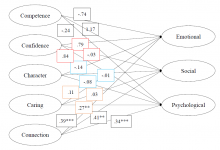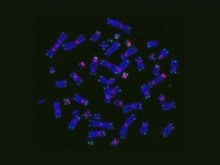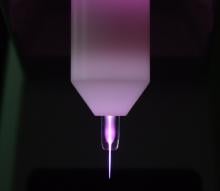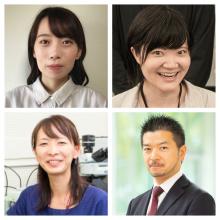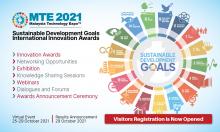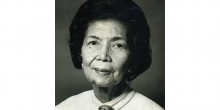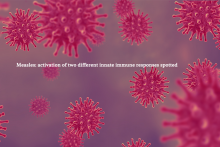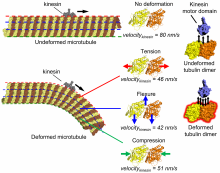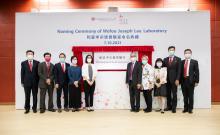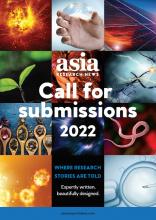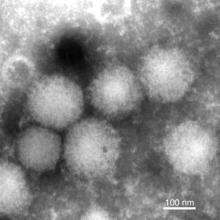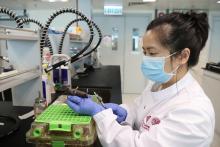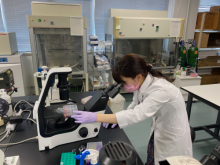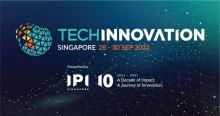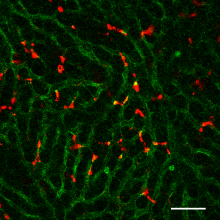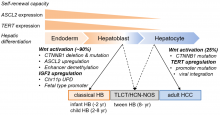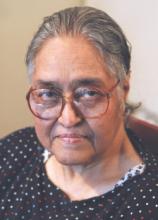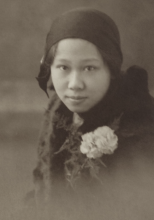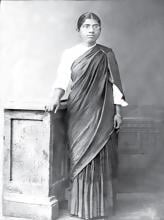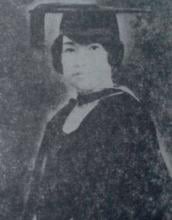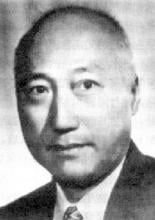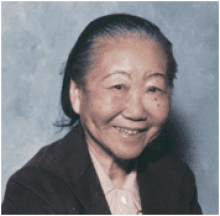Health
News
02 Nov 2021
Malfunctioning of the so-called Hippo signalling pathway within animal cells leads to irregular activity of proteins that regulate genes involved in cell proliferation. Researchers have identified a key step in the process of this aberration, opening the door to new therapeutics for cancers such as head-and-neck squamous cell carcinoma and lung adenocarcinoma.
02 Nov 2021
Ghana’s high youth population suggests that evidence-based programs specifically targeting young people’s development and mental health are key to the country’s socio-economic growth. As a result, social scientists are focusing on rigorous testing of the links between these two sides of personal thriving.
29 Oct 2021
The new radiosensitivity biomarker can make way for chemoradiotherapy treatments tailored to each cancer patient in the future.
28 Oct 2021
A collaborative project between the Osaka City University Graduate Schools of Medicine and BioMedical Engineering Center (BMEC) revealed new bone formation in critical bone defects of animal model with an exposure to a pencil-type non-thermal atmospheric-pressure plasma at surgery.
27 Oct 2021
Researchers reveal correlation between ribotype (RT) strains of Cutibacterium acnes, which are found in human skin, and the lifespan of the nematode Caenorhabditis elegans. Strains RT4 and 8, which are associated with acne in human skin, shortened the lifespan of the nematode, while RT6, which are predominantly found in healthy human skin, did not. Also, it was found that the healthy skin-related RT6 strain of C. acnes improved C. elegans resistance to the pathogenic organism Staphylococcus aureus.
25 Oct 2021
Researchers have revealed in an animal model that ImmuBalance, a fermented soybean product, is effective in suppressing airway inflammation caused by asthma. Results showed a decreased presence of eosinophils in bronchoalveolar lavage fluid, a decrease in mucus production in the bronchial epithelium, and a suppression of proteins that induce eosinophilic inflammation.
22 Oct 2021
Set the stage for a path to recovery through innovations
20 Oct 2021
Giants in History: Fe Villanueva del Mundo (27 November 1911 – 6 August 2011) was a Filipina paediatrician who founded the Philippines’ first paediatric hospital. She graduated top of her class at the University of the Philippines, and in 1936 became the first female student to attend Harvard Medical School.

15 Oct 2021
Dozens of researchers tell Nature they have received death threats, or threats of physical or sexual violence.
15 Oct 2021
EdUHK audiology experts have found improved ways to test the hearing of the young and elderly through technological innovation.
14 Oct 2021
Researchers from The University of Tokyo Institute of Industrial Science describe a novel feature of the immune response to certain viruses such as measles
13 Oct 2021
Direct evidence that microtubules function as mechano-sensors and regulate the intracellular transport of molecules has been reported, leading to new possibilities in the fields of biomechanics, medicine, and biosensors.
13 Oct 2021
The El Niño Southern Oscillation (ENSO) could impact child nutrition in many countries in the tropics, a new study in Nature Communications suggests.
08 Oct 2021
With a generous donation from respected social entrepreneur Dr Joseph Lee Chung-tak, Chairman of Wofoo Foundation, the Wofoo Joseph Lee Laboratory has been established to facilitate pioneering research in Lingnan University (LU)’s Department of Applied Psychology.
07 Oct 2021
Asia Research News features fascinating research from diverse voices. Our upcoming magazine will highlight your research with captivating articles written and visualized for a broad range of readers, produced by our professional team. Don't miss your chance to be a part of the 2022 edition.
06 Oct 2021
Giants in History: Wu Lien-teh (10 March 1879 – 21 January 1960) was a Malaysian-born doctor who invented a mask that effectively suppressed disease transmission.
05 Oct 2021
Researchers are empowering the elderly in Singapore to choose their preferred treatment option when diagnosed with end-stage kidney disease.
04 Oct 2021
A previously unknown virus that can infect humans and cause disease has been identified by scientists in Japan. The novel infectious virus, named Yezo virus and transmitted by tick bites, causes a disease characterized by fever and a reduction in blood platelets and leucocytes.
29 Sep 2021
The 10th edition of TechInnovation presents an array of opportunities to catalyse technology transfer and partnerships for business growth.
29 Sep 2021
A research team led by scientists at Hong Kong Baptist University (HKBU) has developed a novel cell sensor with a barcode-like micro-channel structure that enables rapid and low-cost screening of drug-resistant bacteria. The invention could potentially be used on a large-scale in resource-limited situations such as frequent safety screenings of water, food and public facilities, as well as urgent surveys of massive samples during an infectious disease outbreak, particularly in developing countries.
29 Sep 2021
Geneva, 28 September 2021 – The Stop TB Partnership today released new data showing how the COVID-19 pandemic and dismally low levels of funding represent the main barriers to achieving the United Nations Sustainable Development Goals of ending TB by 2030.
29 Sep 2021
Researchers conducted an online survey on nutrition, dietary behavior, and body image with 32 national and international level para-athletes with physical disabilities such as spinal cord injury or limb defect/amputation. Results showed that about 40% need assistance in procuring and cooking food and that it is difficult to achieve their ideal diet on their own. Also, although para-athletes with a good body image rated their eating habits as healthy, they had a low percentage of correct answers to questions about nutrition.
28 Sep 2021
While the Covid-19 pandemic is ongoing, another public health threat, antibiotic resistance, continues unabated. Microbiologists and chemists from two universities in Hong Kong recently made a breakthrough in synthesizing the first vaccine against one of the most deadly antimicrobial resistant pathogens, Acinetobacter baumannii (A. baumannii). The vaccine shows good protection against the superbug in mice, indicating great potential as a vaccine for humans.
24 Sep 2021
Scientists created “elite” antibodies that can beat a broad range of coronavirus strains, including Delta, using a new technique that dramatically speeds up discovering potent antibody candidates.
23 Sep 2021
Examining spouses from Japan and the Netherlands, a new study suggests that couples have a high degree of commonality in body shape, blood pressure, and even incidences of some diseases.
23 Sep 2021
IPI’s flagship technology brokerage event will spotlight the latest global sustainability solutions from 28 to 30 September 2021.
20 Sep 2021
Researchers at the National Dental Research Institute Singapore (NDRIS) have developed a novel device that aims to limit the spread of aerosols generated during dental procedures, thereby lowering the risk of COVID-19 crosscontamination in the dental setting.
17 Sep 2021
A specially designed lipid nanoparticle could deliver immune-signaling molecules into liver macrophage cells to overcome resistance to anti-tumor immunotherapy.
16 Sep 2021
Genetic and epigenetic profiling of hundreds of hepatoblastoma tumors have revealed many of its secrets, long unknown to those researching and treating what is the most common type of liver tumor in children.
15 Sep 2021
New research published in Stem Cell Reports has found elevated cholesterol supply from astrocytes to neurons in the model of Alzheimer's disease (AD) brains, suggesting that modulating brain cholesterol could be explored in the search of treatment options for the devastating, degenerative disease.
Events
Sorry, no events coming up for this topic.
Researchers
Sorry, no researchers coming up for this topic.
- « first
- ‹ previous
- 1
- 2
- 3
- 4
Giants in history
Chinese biochemist Chi Che Wang (1894 - 1979), one of the first Chinese women to study abroad, advanced to prominent research positions at American institutions including the University of Chicago and the Northwestern University Medical School.
Ruby Sakae Hirose (1904 – 1960) was a Japanese-American scientist whose research contributed significantly to our understanding of blood clotting, allergies and cancer.
Flora Zaibun Majid ( 1939–2018) was an accomplished Bangladeshi researcher in botany and nutrition science and the first female chairperson of the Bangladesh Council of Scientific and Industrial Research.
Iranian physician and bacteriologist Azar Andami (8 December 1926 – 19 August 1984) developed a cholera vaccine to combat an outbreak that swept through the Middle East, India, Southeast Asia, and Africa in 1937.
Irene Ayako Uchida’s (8 April 1917 – 30 July 2013) strides to understand genetic diseases such as Down syndrome paved the way for early screening of chromosomal abnormalities in foetuses.
Baron Kitasato Shibasaburo (29 January 1856 – 13 June 1931) was a Japanese physician and bacteriologist whose work led to a new understanding of preventing and treating tetanus, diphtheria and anthrax.
Maggie Lim (5 January 1913 – November 1995) was a Singaporean physician who promoted family planning and expanded the access to clinics to improve the quality of life for mothers and children in Singapore’s early days.
By isolating soil microorganisms and studying the compounds they produce, Satoshi Omura (born 1935) discovered almost 500 organic compounds with unique properties that were produced by these microorganisms, including many new antibiotics.
The founder of the Adyar Cancer Institute in India, Muthulakshmi Reddy (30 July 1886 – 22 July 1968), fought to uplift women and girls from impoverished situations.
Chinese-American virologist and molecular biologist Flossie Wong-Staal (27 August 1946 – 8 July 2020) was the first scientist to clone HIV and determine the function of its genes.
Maharani Chakravorty (1937 – 2015) was one of India’s earliest molecular biologists whose research paved the way for advances in the treatment of bacterial and viral infections.
Archana Sharma (16 February 1932 - 14 January 2008) conducted research into plant and human genetics that expanded the understanding of both botany and human health. In relation to botany, she uncovered the means by which asexually-reproducing plants evolve into new species.
The first Thai woman to receive a degree in medicine, Margaret Lin Xavier (29 May 1898 – 6 December 1932), is best remembered for her compassion towards her less privileged patients.
In 1915, pathologist Katsusaburo Yamagiwa and his research assistant Koichi Ichikawa became the first to prove that chronic exposure to chemicals can cause cancer.
Filipino chemist and pharmacist Manuel A. Zamora (29 March 1870 – 9 July 1929) is best remembered for his discovery of the tiki-tiki formula to combat beriberi, a disease caused by Vitamin B1 deficiency.
After witnessing death and suffering as a youth in his home village during World War II, Nguyễn Tài Thu (6 April 1931 – 14 February 2021) set his sights on alleviating pain by becoming a doctor. After studying Traditional Chinese Medicine in China in the 1950s, Thu returned to Vietnam to serve in military hospitals. Eventually, he became the country’s foremost practitioner of acupuncture, a technique he first learned by inserting needles into himself.
David T. Wong (born 1936) is a Hong Kong-born American neuroscientist who is best known for discovering the antidepressant drug fluoxetine, better known as Prozac.
Indian organic chemist Asima Chatterjee (1917 to 2006) studied the medicinal properties of plant products, especially compounds known as vinca alkaloids.
Hsien Wu (24 November 1893 – 8 August 1959) is widely regarded as the founder of biochemistry and nutrition science in China. He was the first to propose that protein denaturation was caused by the unfolding of the protein, instead of chemical alteration.
Umetaro Suzuki (7 April 1874 – 20 September 1943) was a Japanese scientist best remembered for his research on beriberi, a disease caused by vitamin B1 deficiency, characterized by limb stiffness, paralysis and pain.
Syed Qasim Mehdi (13 February 1941 – 28 September 2016) was a Pakistani molecular biologist who was a founding member of the Human Genome Diversity Project (HGDP), which assessed human diversity by studying human migration, mutation rates, relationships between different populations, genes involved in height and selective pressure.
Tsai-Fan Yu (1911 – 2 March 2007) was a Chinese-American physician and researcher who was the first female full professor at Mount Sinai School of Medicine. She discovered that gout, a condition characterized by the painful inflammation of joints, was caused by elevated levels of uric acid in the bloodstream.
Min Chueh Chang (10 October 1908 – 5 June 1991) was a Chinese-American biologist who studied fertilization in mammalian reproduction.
A Japanese surgeon, Tetsuzo Akutsu (20 August 1922 – 9 August 2007) built the first artificial heart capable of keeping an animal alive.
Ogino Ginko (3 March 1851 – 23 June 1913) was the first registered female doctor to practise modern medicine in Japan.



